Merhaba arkadaşlar
Son Miami gezisinde çok güzel bir manastıra gitme imkanı buldum. Bu güzel yeri ve fotoğrafları sizlerler paylaşırken manastırın tarihi hakkında ufak bir bilgi de vereceğim.
St Bernard de Clairvaux manastırının yapımına 1133 yılında başlanmış. İspanya'nın Segovya şehrine yakın bir yerde inşaa edilen manastırın orjinal ismi "The Monastery of Our Lady, Queen of Angels" imiş. Bernad azizlik seviyesine kadar yükselince de manastırın ismini değiştirmişler.
1925 yılında William Randolph Hearst adında bir abimiz manastırı avlusuyla beraber satın olmuş. 11 bini aşkın tahta kutular içerisinde parça parça taşınan bu mimarı yapı Amerikada tekrardan oluşuturulmuş ve günümüze kadar güzel bir şekilde korunmuş. Bundan yüz yıl önce gerçek boyutlarda oynanan ilk yapboz diyebiliriz buraya.
Hello friends,
On my last trip to Miami, I had the opportunity to visit a beautiful monastery. While sharing this lovely place and photos with you, I will also provide a bit of history about the monastery.
Construction of the St Bernard de Clairvaux Monastery began in 1133. Originally named "The Monastery of Our Lady, Queen of Angels," it was built near the city of Segovia, Spain. When Bernard was elevated to sainthood, the monastery's name was changed.
In 1925, a man named William Randolph Hearst purchased the monastery along with its cloister. This architectural structure was transported in over 11,000 wooden crates and reassembled in America. It has been well-preserved to this day. We can say this place was the first jigsaw puzzle played in real size a hundred years ago.

Manastırın otoparkına arabammızı bıraktıktan sonra girişine doğru ilerledik. Bizi ufak müzemsi bir oda karşıladı. 10 dolar olan giriş ücretini verdikten sonra bu ufak lobi/müze karışımı odada gezimeye başladık. Burda Papa'nın kabinesinden şövalye armorlarına, tarihi kadehlerden El Greco'nun aşağıda gördüğünüz eserinin replikasına kadar birçok ilgi çekici şeyi görmek mümkün.
After parking our car in the monastery's parking lot, we headed towards the entrance. We were greeted by a small, museum-like room. After paying the entrance fee of 10 dollars, we began our tour in this small lobby/museum hybrid room. Here, it was possible to see many interesting items, ranging from the Pope's cabinets to knight armors, from historic goblets to a replica of the artwork by El Greco you see below.

El Greco adından da anlaşılacağı üzere İtalya'da yaşayan Yunan bir ressam. Kendisi resimlerini her zaman Yunanca ismiyle imzalarken rönesans stilinde yaptığı eserlere saatlerce bakıp yeni detaylar görmek kaçınılmaz.
Bu odadan çıktığınızda kendinizi manastıra giden yolda buluyorsunuz. Ufak bir geçiti andıran kapı sizi önce çok iyi bir şekilde bakılan manastırın bahçesine götürüyor. Ortamdaki sessizlik ara ara kuş cıvıltılarıyla ara ara da uzaktan gelen insanların aralarındaki konuşmalarla bölünüyor. Parçalı bulutlu hava adeta bize bir an önce gezin fotoğraflarınızı çekin çünkü ben yağmur getirmeye hazırım dermiş gibi bakıyor bizlere.
As you can guess from his name, El Greco was a Greek painter who lived in Italy. He always signed his paintings with his Greek name. Spending hours looking at his Renaissance-style works inevitably reveals new details. When you leave this room, you find yourself on the path leading to the monastery. A door reminiscent of a small passage first leads you to the well-maintained garden of the monastery. The silence of the environment is occasionally broken by bird chirps and conversations of people heard from afar. The partly cloudy weather seems to urge us to hurry and take our photos, as if it's ready to bring rain.
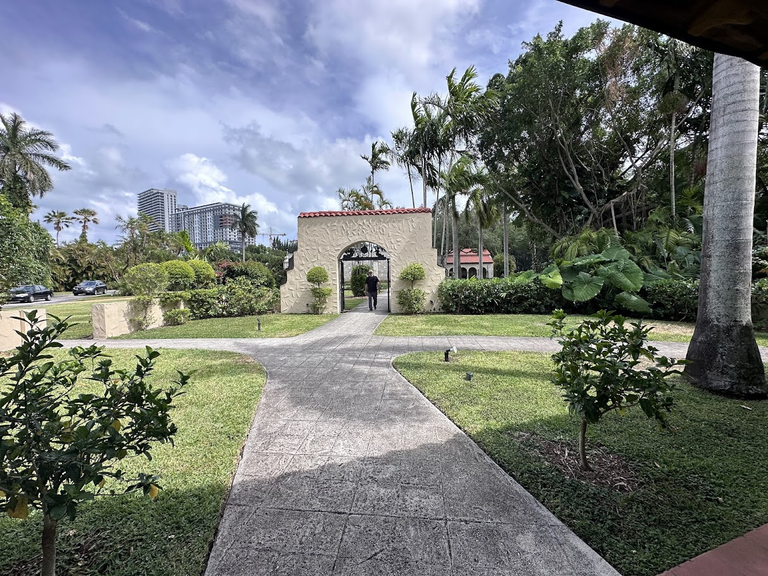
Manastırın bahçesindeki çimler çok nizami bir şekilde kesilmişken palmiye ağaçlarının davetkar dansı kamerama aşağıdaki gibi yansıyor. Bahçede birçok çalışan görüyoruz. Şehrin modern yapıları manastırın arkasından bizlere el sallarken yürüyüşüme devam ediyorum.
While the grass in the monastery's garden is meticulously trimmed, the inviting dance of the palm trees is captured by my camera as shown below. We see many workers in the garden. As the modern structures of the city wave to us from behind the monastery, I continue my walk.
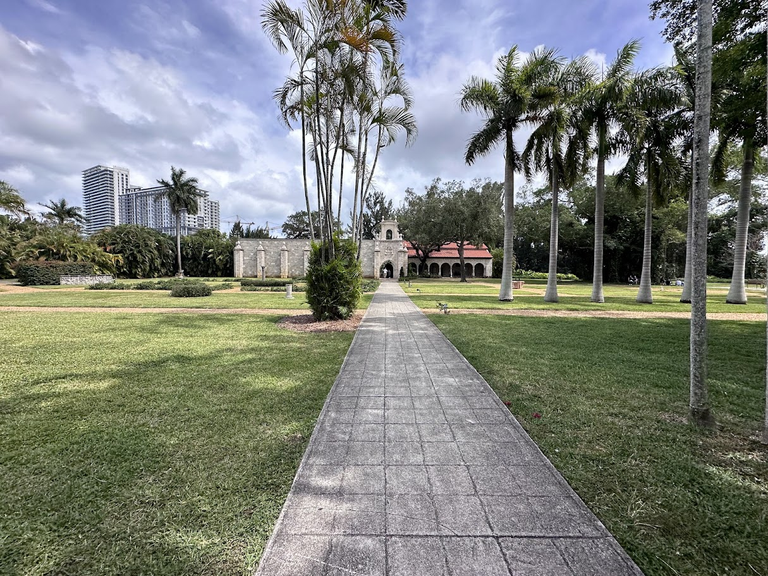
Palmiye ağaçları ilkokulda andımızı söylemek için sıraya girmiş talebeler gibi bizi karşılıyor. Fotoğrafı incelediğimde sanki ağaçlar photoshop programıyla eklenmiş gibi durduduğunu farkediyorum. Hem bu kadar doğal hem de bu kadar olağanüstü olmaları beni mutlu ediyor. Manastır bahçesinin patika yolunda ağır adımlarla ilerlemeye başlıyorum.
The palm trees greet us like students lining up to sing a chorus ischool. When I examine the photo, I notice that the trees look as if they were added with Photoshop. Their being both so natural and so extraordinary makes me happy. I start to walk slowly along the garden path of the monastery.
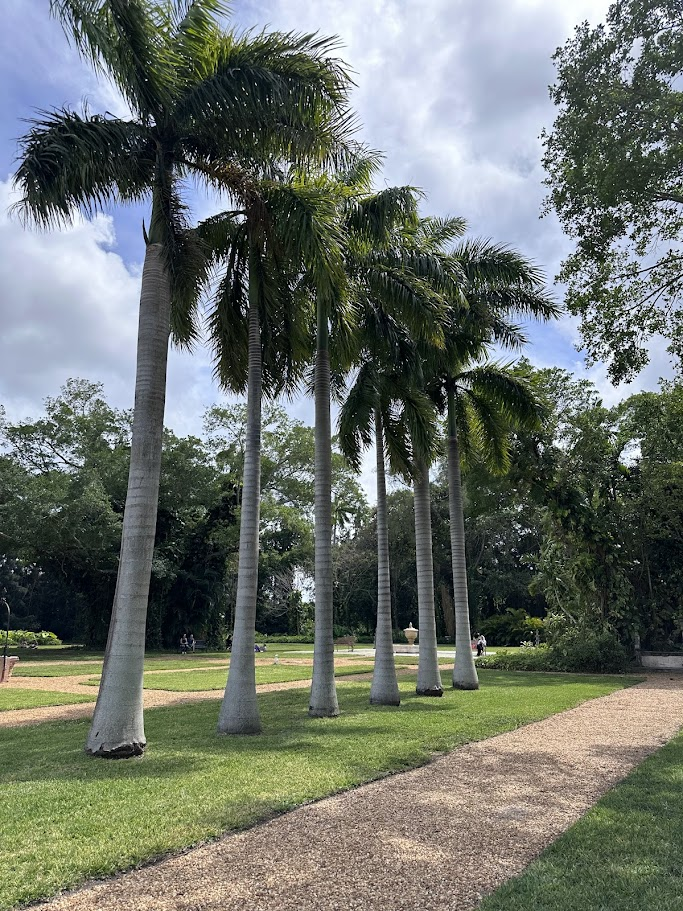
Artık karşımda tam olarak beliriyor antik manastırımız. Dış cephesini çevreleyen kolonların üstleri süslenmiş. Kemer geçit şeklinde bir kapısı var ve bu kemerler bitişiğindeki yapının da dış duvarlarındaki açıklıklarda kullanılmış. Dışarsının aydınlık olması giriş kapısında bir kara bulut oluşturmuş adeta. İçeriyi görmek sadece kemerli kapıdan girince mümkün oluyor.
Now, the ancient monastery stands fully before me. The tops of the columns surrounding its exterior are adorned. It has an arched gateway, and these arches are also used in the openings of the exterior walls of the adjacent structure. The brightness outside has created a dark cloud at the entrance, as if. Only upon entering through the arched door does it become possible to see inside.
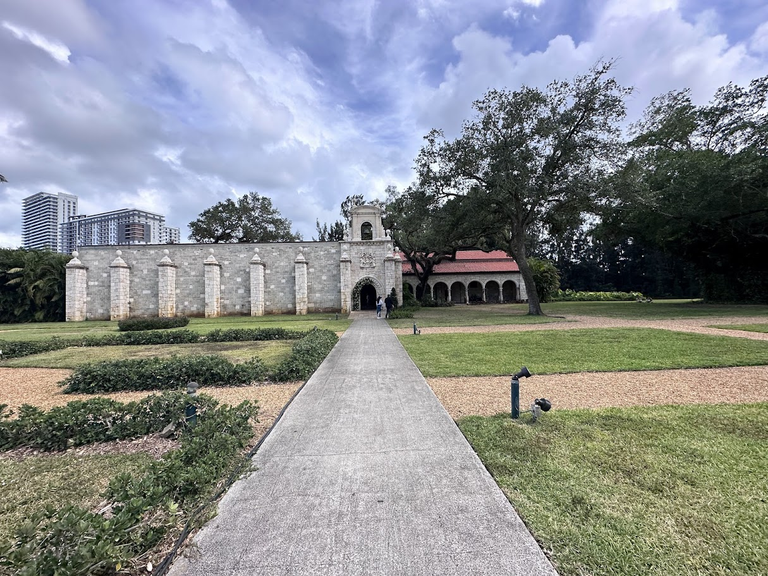
Kapıdan girdiğimizde kalebodur döleme üzerine oluşturulmuş duvarlar ve kemerlerle bağlanan koridorlar görüyoruz. Yapının özellikle avlusuna bakan kısımlarındaki duvarları renk itibariyle farklı duruyor. Muhtemelen farklı yıllarda inşaa edildiklerine işaret ediyor bu kontrast farkı. Avluya göre ters tarafta kalan dış duvarlar üzerinde büyük ihtimalle eski tarihlerde şamdan görevi görerek aydınlatma için kullanılmış işlemeler var. Her koridorunda sonunda bir heykel bizleri karşılıyor.
When we enter through the door, we see walls and corridors connected by arches, created on tiled flooring. The walls, especially those facing the courtyard, appear differently colored, likely indicating they were built in different years—a contrast that suggests their diverse historical contexts. On the exterior walls facing away from the courtyard, there are carvings that probably served as sconces in ancient times, used for lighting. At the end of each corridor, a statue greets us.
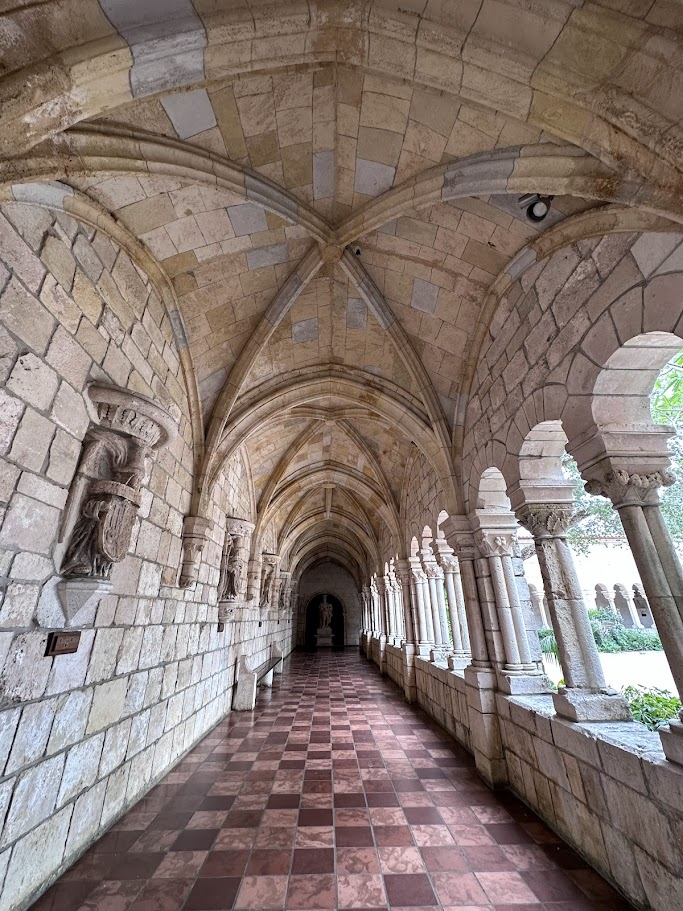
Aşağıda gördüğünüz yedinci Alphonsus manastırı kuran arkadaş. Yanında da yılı görüyorsunuz, 1911 civari yazıyor. Bu heykeller yapılış tarzı itibariyle biraz efesteki heykelleri hatırlatmadı değil. Tabi ki ordakiler çok daha eskiydi.
The statue you see below is for the seventh Alphonsus, the founder of the monastery. At the bottom, you can see the year, around 1911. The style of these statues somewhat reminds me of the statues in Ephesus, although those are much older.
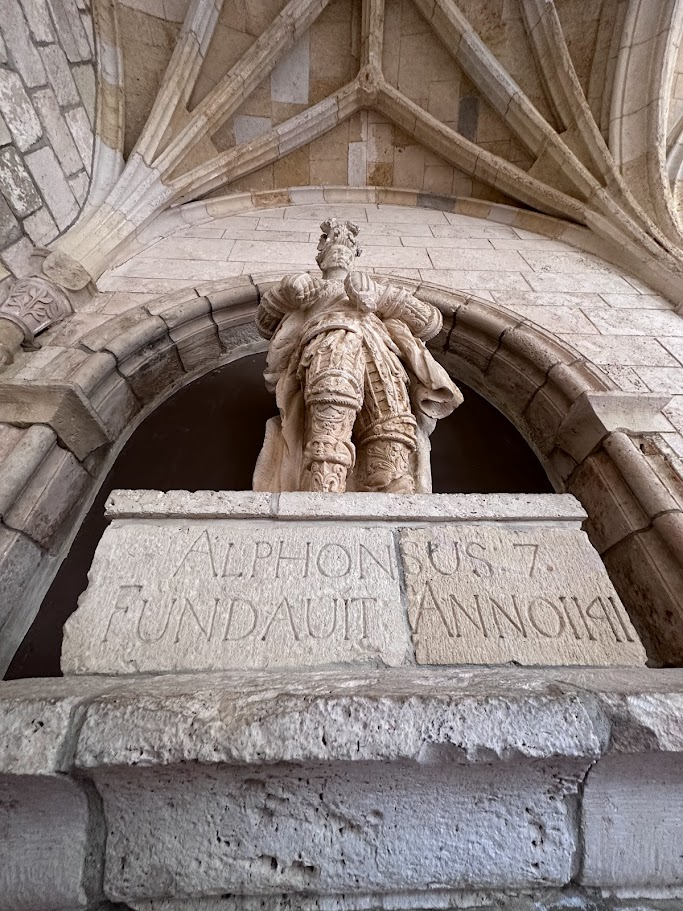
Aşağıdaki fotoyu da heykellerdeki detayları daha yakından görebilesiniz diye çektim. Giysilerindeki işlemeler, açıklıklar ve delikler özenle işlenmiş. Yüz hatlarına ise yeterince detay gösterilmemiş gibi geldi bana. Belki de heykeltraşın isteğinden çok heykeli yaptıranın ricası üzerine gerçekleşmiş olabilir.
I took the photo below so that you can see the details on the statues more closely. The embroideries, gaps, and holes in their clothing are meticulously crafted. However, the facial features seem to lack sufficient detail, which might have been more the request of the person/model than the sculptor's preference.
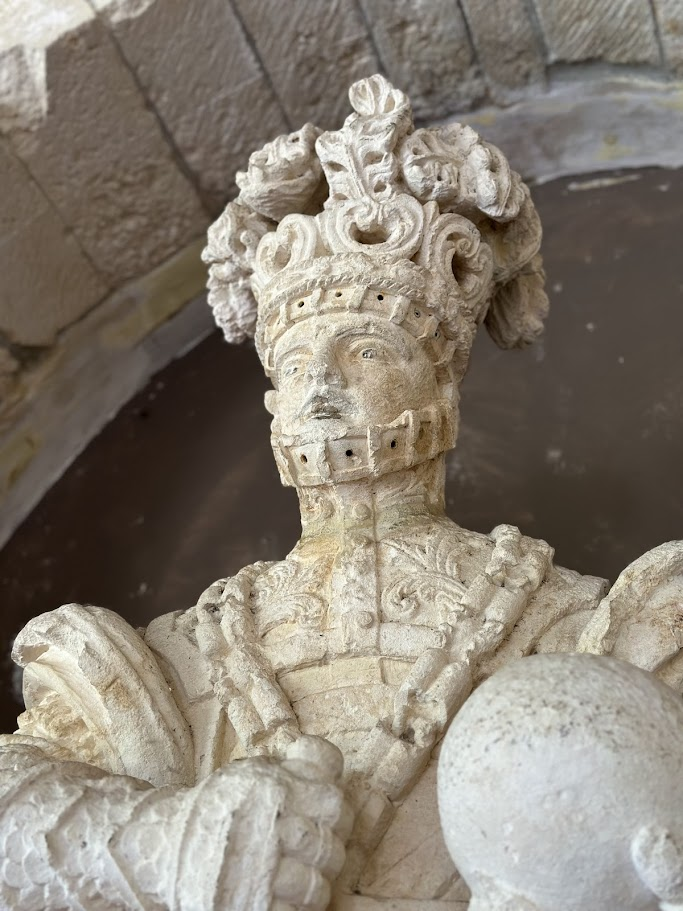
Bu koridorları ortalayan bir avlu var fakat avluda açıkcası görecek bir şey yok. Onun yerine yakaladığım birkaç bitki ve çiçeğin fotoğraflarını paylaşıyorum. Arkada blurlu şekilde avludaki büyük ağacı da görmeniz mümkün.
There is a courtyard centering these corridors, but honestly, there isn't much to see in the courtyard. Instead, I'm sharing some photos of a few plants and flowers that I captured. You can also see the large tree in the courtyard in a blurred form in the background.
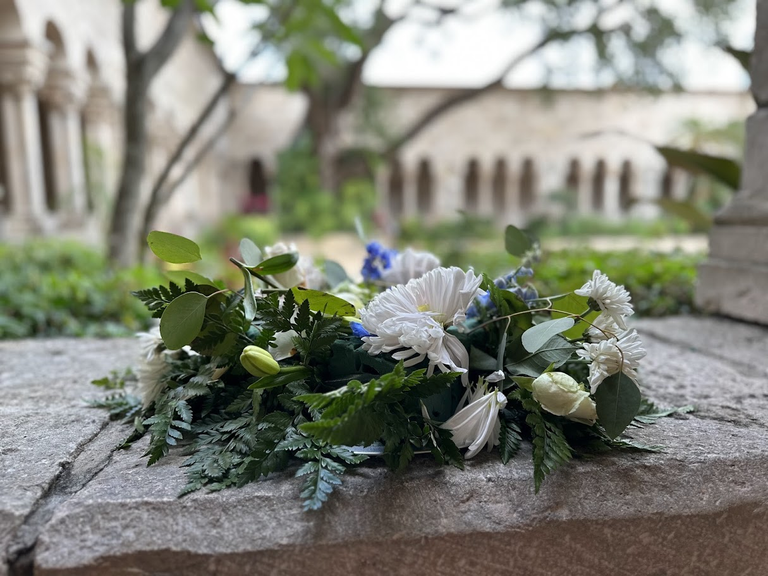
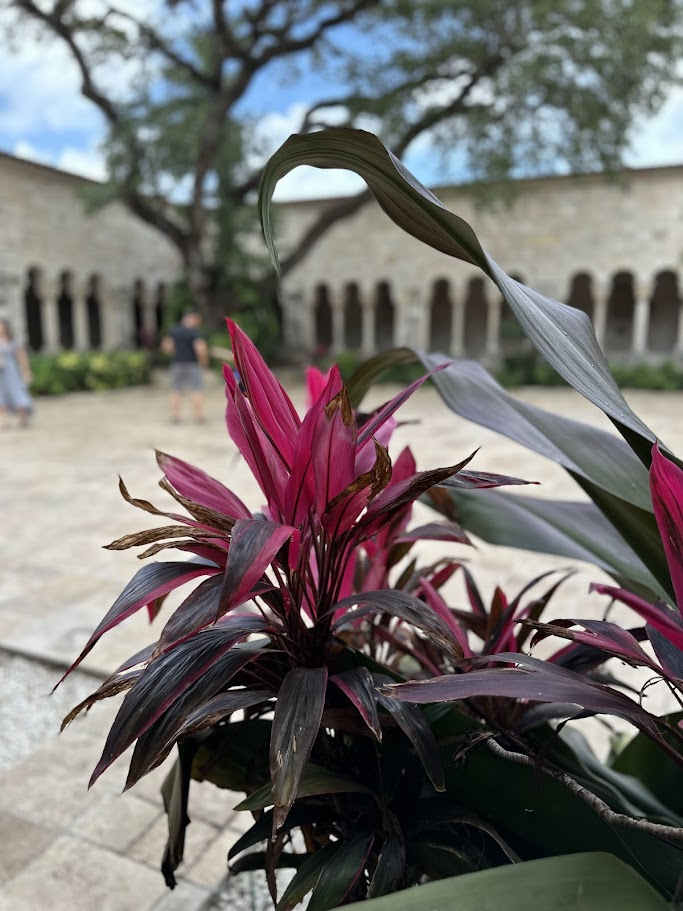
Yan odaya geçtiğimizde, ana girişteki yapıya benzer bir yapıylar karşılaşıyoruz. Adeta onun bir minyatürü gibi burası. Avlusu çok daha ufak ve ortasında güzel bir çeşme mevcut. Bu kareyi fotoğraflarken su damlalarının bu şekilde net çıkacağını düşünmemiştim çünkü gerçek hayatta baktığınızda sürekli bir su akışı görüyorsunuz.
When we moved to the adjacent room, we encountered a structure similar to the one at the main entrance, almost like a miniature version of the main room. The courtyard is much smaller, and there is a beautiful fountain in the middle. I hadn't thought the water droplets would come out so clearly in the photo because when you look in real life, you see a continuous flow of water.

İçerde dolaşmayı bitirdikten sonra manastırın yan tarafındaki toprak yolu takip ettik. Bu yolun sonunda çocukların oynaması için ufak bir labirent vardı. Fakat yol üzerinde de birkaç heykelcik gördük. Aralarından en beğendiğim fotoğrafı aşağıda paylaştım. Doğayla bu kadar iç içe olması da beni memnun etti.
After finishing our tour inside, we followed the dirt path next to the monastery. At the end of this path, there was a small maze for children to play in. However, we also saw a few small statues along the way. Below, I've shared my favorite photo among them. I was pleased with how integrated it was with nature.
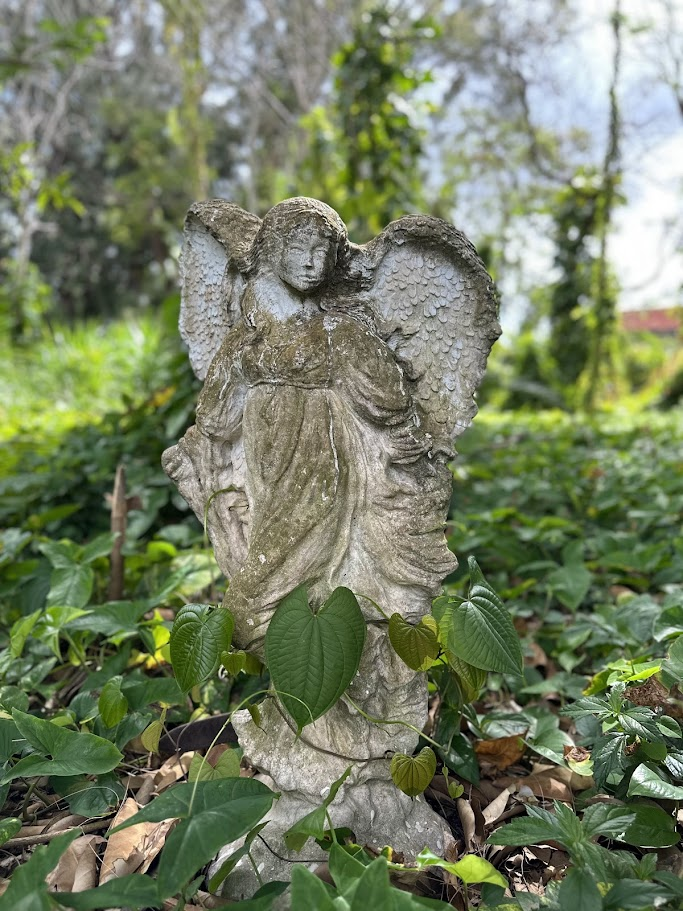
Son olarak da toprak yoldan baktığınzda görülen manzarayı paylaşarak bu yazımın sonuna geliyorum.
Finally, I'm concluding this post by sharing the view seen from the dirt road.
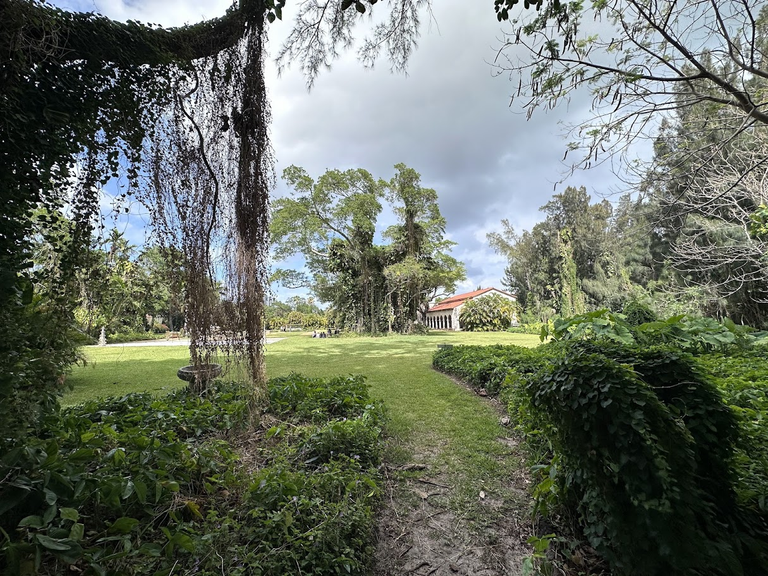
Umarım okurken zevk almışsınızdır.
Teşekkürler ve güzel bir uyku çekmeyi unutmayınız
I hope you enjoyed reading this. Thank you, and don't forget to have a good night's sleep.
Congratulations @steinhammer! You received the biggest smile and some love from TravelFeed! Keep up the amazing blog. 😍 Your post was also chosen as top pick of the day and is now featured on the TravelFeed front page.
Thanks for using TravelFeed!
@for91days (TravelFeed team)
PS: Did you know that we recently launched the truvvl app? With truvvl, you can create travel stories on the go from your phone and swipe through nearby stories from other TravelFeed users. It is available on the Apple App Store and Google Play.
Thank you @travelfeed and @for91days!
Congratulations, your post has been added to Pinmapple! 🎉🥳🍍
Did you know you have your own profile map?
And every post has their own map too!
Want to have your post on the map too?
I am going to miss you <3
Hiya, @choogirl here, just swinging by to let you know that this post made it into our Honorable Mentions in Travel Digest #2212.
Your post has been manually curated by the @pinmapple team. If you like what we're doing, please drop by to check out all the rest of today's great posts and consider supporting other authors like yourself and us so we can keep the project going!
Become part of our travel community:
Thanks @choogirl and @pinmapple!